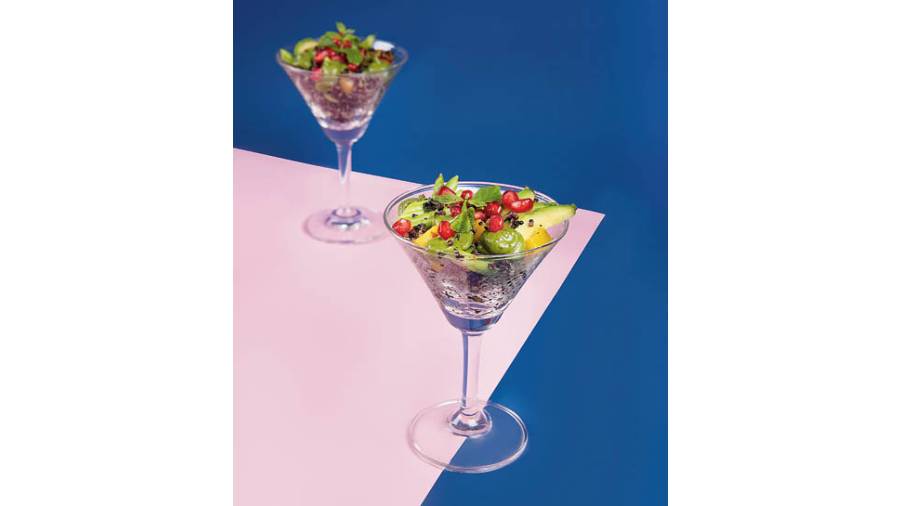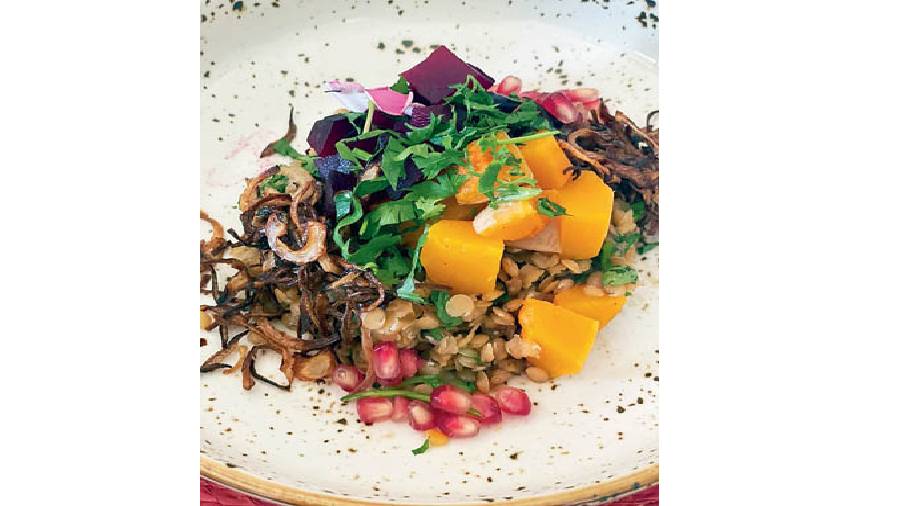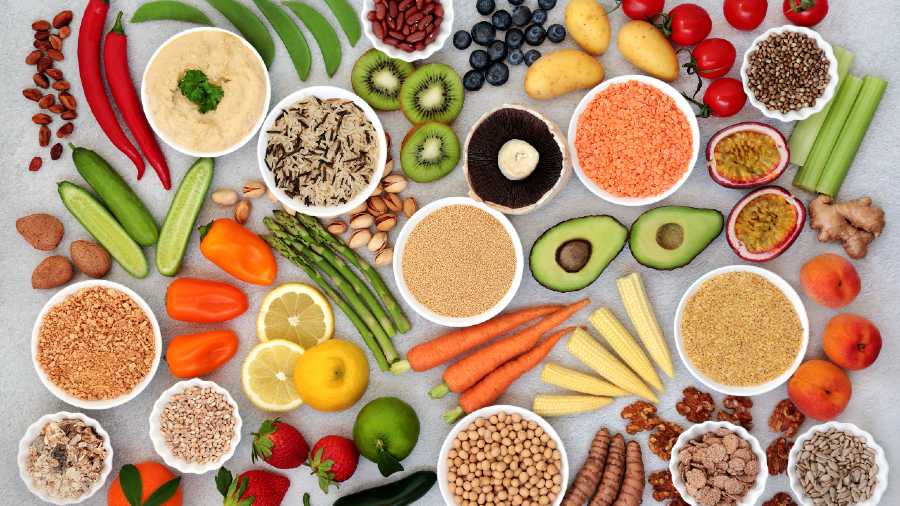Earlier this year, Eleven Madison Park, hands down one of the top restaurants in New York, nay, the whole world, shook the culinary scene by going 100 per cent plant based. For a place known for its Lavender Glazed Duck and Poached Lobster with Chestnuts, completely abandoning non-vegetarian products was unthinkable, yet, here they are. And, a good reason they have!
Animal husbandry has a direct and negative impact on the planet, and Chef Daniel Humm’s decision to give up meat and dairy offerings at his restaurant is rooted in the fact that current food systems are just not sustainable.
Well, I know what some of you may be thinking: a Michelin star restaurant, charging north of $350 per person, serving up only vegetables?! That doesn’t sound all too appetising! Fear not, for there is a lot more that plant-based cuisines have to offer.
Stems, Roots, Leaves and Shoots
Recent studies have shown that early humans consumed a largely plant-based diet — nuts, seeds, leaves and even roots made up most of their meals, accented with meat.
It is inexact that a plant-based meal cannot provide sufficient protein required by the human body. There are many non-meat sources that carry high protein content. Let me walk you through a few of them.
Tofu, Tempeh and Edamame:
Soybean, or edamame in their raw form, is an excellent source of protein. Tofu, by far, is one of the most popular by-products of soybeans. Made from fermented soy milk, it takes on the flavour of the sauce it is presented with. Tempeh, although similar to tofu in its cake-like appearance, is made from whole fermented soybeans. It has the highest nutritional value of the three and can pack up to 15g of protein in half a cup. These soy products contain good levels of iron and calcium too.
Lentils:
Good ol’ dal. Lentils are omnipresent in Indian cooking and make up for bulk of the protein vegetarians consume in India. The diverse range of dals contain fibre, iron and potassium amongst other key elements.
Chickpeas:
Also known as garbanzo beans or Kabuli chana, chickpeas are very versatile. Use it as a salad, throw it into curries or churn it up into hummus. At almost 15g of protein in a cup, they’re a ready source of excellent plant protein.
Peanuts and almonds:
These snackable nuts are a treasure trove of healthful qualities. High in protein and vitamin E, amongst others, these nuts can be had raw, roasted or as nut butters. Peanut butter has been a family favourite for ages, and almond butter comes a close second. Throw it in with a bowl of oats topped with raspberries and chia seeds, and there’s a complete breakfast for you.
Spirulina:
Spirulina is a blue or green algae, an aquatic plant that grows in the sea. It is readily available in powder form, and can be added to juice, smoothies or even water to up one’s protein intake. It has a savoury taste, much like seaweed, which can take time to acquire. Brimming with nutrients such as iron, manganese and B-vitamins (not B12), it’s a great addition to a plant-based diet.
Chia seeds:
Hailed as one of the super foods, chia seed belongs to a flowering mint plant native to parts of Mexico and Guatemala. Historically, they’re one of the oldest forms of nutrition in the Mayan and Aztec diets.
When in contact with water, the exterior of the seed plumps up and creates a jelly-like structure that is dense in nutrition — fibre, protein and omega-3 fatty acids.
Chia seeds contain all the nine essential amino acids for building muscle in the body. They’re gluten-free, vegan and overall have a very satisfying mouth feel.
Hemp:
Hemp seeds, or hemp hearts, are seeds of the hemp plant that are grown for food. Wildly nutritious, these seeds have a lovely nutty flavour. Super easy to use: just toss them in salads, or over a chia pudding and there you have a healthful bowl of goodness.
Seitan:
The Buddhists have been using Seitan for a very long time and you may have had it too at your favourite Asian restaurant as ‘mock meat’. Basically, a combination of wheat gluten and spices, the chewy texture of this protein-rich ingredient makes it a top choice for stews and curries that call for meats. Upon cooking in soy sauce, rich in lysine (an amino acid that makes up protein structures), Seitan can offer up to 60g of protein in a cup.
Since it is derived from wheat gluten, it is not gluten-free and best avoided by those with Celiac or gluten intolerance.
Quinoa:
A seed of the amaranth family, quinoa has been around for centuries. An important crop for the Inca Empire, it is local to South America and widely consumed there. High in protein, fibre, manganese and magnesium, it is gluten-free and non-GMO (Genetically Modified Organism).
Quinoa also carries high content of quercetin, a flavonoid known for its anti-inflammatory, anti-viral, anti-cancer and anti-depressant effects in animal studies.
It cooks easily and is versatile, a great substitute for most grains.
Ezekiel bread:
Made of barley, wheat, millet, lentils and spelt (an ancient grain), Ezekiel bread is an excellent source of protein and a good alternative for bread.
Protein-rich vegetables:
Brussels sprouts, broccoli, avocados and potatoes are a few vegetables that have a good amount of protein. Sure, you would need to supplement it with other richer sources of protein but it’s good to know that a single medium stalk of broccoli can contain up to 4g of protein. So, don’t forget your veggies while you aim for a healthier plant-based diet!
MYCOPROTEINS AND BEYOND MEAT
Giving up meat “cold turkey” can be a difficult task. Here’s introducing an array of plant-based meats that promise the meaty goodness sans the animal.
Mycoprotein
An edible fungus based protein, it is an excellent meat analogue. Sold under the brand name Quorn in Europe and North America, it is higher in fibre than traditional chicken, and uses 90 per cent less resources.
However, it is a processed food and one should read up about it to understand the health benefits of this product.
Mock meat
The growing trend of incorporating vegetarianism into a diet of meat and fish is called “flexitarianism”, and there are products available today that will leave the most die-hard meat fans scratching their heads. The health risks of meat-high cholesterol, increased risk of cardiovascular diseases and some types of cancers, put them in a bracket of foods that should be consumed less. To make those choices simpler, many companies have come up with plant-based meat alternatives that have the same texture and taste as meat. Of course, these products are processed, but have the benefits of higher fibre and are cleaner for the environment.
Plant on my Plate
In case you were wondering what a $350 vegan meal at Eleven Madison Park would entail, here’s a hint — it’s an overabundance of time! Precision and finesse do the ballet on picturesque plates that don’t aim to mimic meat but proudly flaunt produce that is as fresh as a blade of grass after a rainy day.
Plant-based foods have been the mainstay of many communities in India — almost 40 per cent of our country is vegetarian. Yes, dairy is involved, but that is a topic for another day. A ‘green diet’ is definitely better for your body but some may argue we only have one life.
Try out

Avocado quinoa salad
Ingredients:
• Boiled black quinoa: 100g
• Pomegranate seeds: 30g
• Half avocado thinly sliced
• Mint leaf
• Chopped mangoes: 50g
• Parboiled asparagus: 50g
For avocado mousse:
• Fresh and ripe avocado: 1
• Lemon juice: 1tsp
• Extra virgin olive oil: 3tbsp
• Mayonnaise: 1tsp
• Salt, to taste
• Black pepper, to taste
Blend to puree, put in a piping bag, put in the fridge
Method:
• Mix all the blanched vegetables together, mix with 1tsp olive oil and pinch of salt.
• Pipe the dressing on top.

Warm Lentil Salad
Ingredients:
• Red lentil: 1 cup
• Crispy onion: 1 medium size
• Handful of pomegranate
• Coriander: 1 bunch
• Tamarind or pomegranate molasses: 1tsp
• Garlic powder: 1tsp
• Chopped parsley: 50g
• Olive oil: 1tbsp
• Lemon juice: 1tsp
• White balsamic vinegar: 1tsp
• Oven-roasted beetroot: 1
• Oven-roasted butternut squash: 100g
Method:
• Bring a medium saucepan of lightly salted water to a boil. Add the lentils and cook just until tender.
• For the dressing combine olive oil, garlic powder, lemon juice, pomegranate molasses, chopped parsley and coriander leaf, white balsamic vinegar.
• Top the salad with crispy onion, chopped parsley, coriander leaf, pomegranate seeds, small segments of butternut squash and beetroot, drizzle the dressing.
Are you trying to include more plant-based products in your diet? I would love to hear your views about it. Drop me a line at vidisha@paprika.net.in
Pictures: The author

